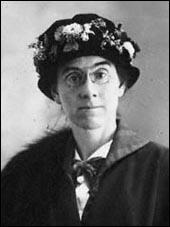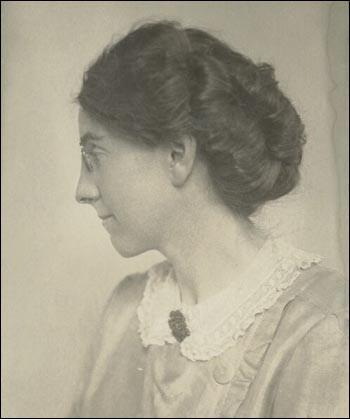Philippa Strachey

Philippa Strachey, the fifth among the ten children (five daughters and five sons) of Lieutenant-General Sir Richard Strachey (1817–1908) and his wife, Jane Grant Strachey (1840–1928), was born at Stowey House, Clapham Common, on 19th April, 1872. Amongst her brothers and sisters were Lytton Strachey, James Strachey and Oliver Strachey.
After visiting India to see her brothers she taught at an infant school. Her life changed after she met feminist Emily Davies. Under her influence she joined the London Society for Women's Suffrage. She was asked to organize the National Union of Suffrage Societies (NUWSS) march on 9th February 1907. It was such a success that she was given the task of organizing all subsequent NUWSS demonstrations and pageants.
Several members of the family were involved in the struggle for women's suffrage. This included her mother, sister-in-law, Rachel Strachey, and her cousin Duncan Grant, a member of the Men's League For Women's Suffrage. In 1909 she encouraged him to enter the Artists' Suffrage League (ASL) poster competition. Grant submitted Handicapped! and shared the first prize of £5. The Common Cause newspaper described it as depicting "a stalwart Grace Darling type struggling in the trough of a heavy sea with only a pair of sculls, while a nonchalant young man in flannels glides gaily by, with a wind inflating his sail - the vote - treating with good temper a subject which often causes bitterness."

According to Barbara Caine: "A woman of considerable wit and charm, Pippa Strachey was a gifted and stylish correspondent and a great raconteuse. She preferred the backroom role of organizing secretary to any more public position, hating the limelight and speaking in public very rarely."
Strachey was a strong supporter of the British government during the First World War. This involved her organizing the Women's Service, which both found work for women and trained them as substitutes for men in many skilled occupations. After the war she continued to concentrate on women's employment, through the London Society for Women's Service, that continued to campaign for the vote for all women.
Strachey also chaired the advisory committee of the Women's Employment Federation, was an adviser to the Cambridge University Women's Employment Committee, and supported both the Joint Committee for Women in the Civil Service and the Society for Promoting the Training of Women. She served for many years on the board of Bedford College, London. A devoted admirer of Millicent Garrett Fawcett, she played a major role in establishing the Fawcett Society.
Philippa Strachey lost her sight but in her nineties she taught herself braille She died, unmarried, on 23 August 1968 at 38 Carlton Drive, Putney.
Primary Sources
(1) Barbara Caine, Oxford Dictionary of National Biography (23rd September, 2004)
Pippa's was largely a life of leisure, in which she combined some domestic tasks with visits to friends, cycling, and playing her violin until she made a long trip to visit her three brothers in India in 1900–01. While she was there independent travel, the organization and supervision of a team of male Indian servants, and the need to assume the position of family head in dealing with the death of a close relative (Arthur Strachey, chief justice of Bombay) gave her a sense of her own capacities and the taste for a career. On her return she taught infants at Allenswood for a few years until she encountered the veteran feminist Emily Davies, whom she later recalled 'in her bonnet and shawl, with unerring instinct discovered my existence and caught me in her net and changed a butterfly into a caterpillar'. Under Davies's guidance she became first a committee member and then, in 1907, secretary of the London National Society for Women's Suffrage. With no previous experience she was called on to organize the first large public demonstration of the National Union of Women's Suffrage Societies (NUWSS)�the ‘mud march' of 1907�which was such a success that she was given the task of organizing all subsequent NUWSS demonstrations and pageants. Suffrage activity was something of a family tradition, and she worked closely both with her mother, Lady Strachey (who was one of the leaders of the mud march), and with her sister-in-law Rachel Strachey (1887–1940). Although she had a full-time role as a feminist activist she was also the mainstay of her family, living with and nursing both parents in their declining years.
A woman of considerable wit and charm, Pippa Strachey was a gifted and stylish correspondent and a great raconteuse. She preferred the backroom role of organizing secretary to any more public position, hating the limelight and speaking in public very rarely. She retired from her feminist activities in 1951 and devoted much of her remaining time to sorting through family papers - a slow task made slower by her failing eyesight. Blindness made it essential for her to go into a nursing home, but even there, in her nineties, she taught herself braille and was always in such good spirits that friends visited in order to be cheered up.

